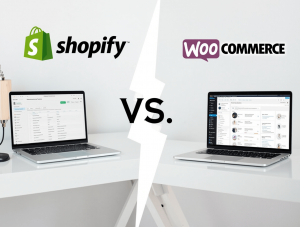
Did you know that over 2.4 billion people shopped online in 2024, spending more than $6.3 trillion globally? Yet despite the abundance of options, most consumers still gravitate toward two dominant marketplaces: Amazon and eBay. These e-commerce giants have fundamentally reshaped how we shop, but they offer distinctly different experiences that can significantly impact your satisfaction as a buyer.
Many shoppers struggle to determine which platform better serves their needs—Amazon with its streamlined shopping experience and rapid delivery, or eBay with its auction-style listings and often unique inventory. This choice becomes especially important when considering factors like product authenticity, pricing transparency, and customer protection policies.
In this comprehensive comparison, we’ll analyze everything from pricing structures and shipping policies to customer service approaches and seller requirements, providing you with the insights needed to choose the platform that aligns with your specific shopping preferences and priorities.
The Evolution of Online Marketplaces
Historical Context
Amazon launched in 1994 as an online bookstore before expanding into the “everything store” we know today. Its growth strategy focused on customer convenience, pioneering features like one-click purchasing and subscription-based shipping through Amazon Prime.
eBay, founded in 1995, began as AuctionWeb—a person-to-person trading platform. While it initially gained popularity through its auction format, eBay has evolved to include more fixed-price listings while maintaining its peer-to-peer marketplace identity.
Both platforms have adapted over time, but with fundamentally different philosophies: Amazon built a highly controlled ecosystem prioritizing standardization and efficiency, while eBay created a more open marketplace emphasizing individual seller autonomy and product variety.
Current Market Positions
Amazon has developed into a comprehensive ecosystem including marketplace, logistics, content streaming, cloud computing, and consumer electronics. eBay has remained more focused on its marketplace core, specializing in unique, collectible, and second-hand items while expanding internationally.
As of 2025, Amazon claims approximately 300 million active customers worldwide compared to eBay’s 159 million. However, eBay maintains strong positions in certain product categories and geographic markets.
Business Models and Marketplace Structure
Amazon’s Approach
Amazon operates on a hybrid model combining:
- First-party sales (items Amazon purchases wholesale and sells directly)
- Third-party marketplace (independent sellers using Amazon’s platform)
- Private label brands (Amazon’s own product lines)
This structure gives Amazon significant control over the shopping experience, allowing it to standardize shipping, returns, and customer service while collecting valuable data across all transactions.
For shoppers, this creates a consistent experience but sometimes at the expense of price competition and product diversity. Amazon prioritizes its own offerings and those of sellers who use its fulfillment services, potentially limiting visibility for independent sellers.
eBay’s Approach
eBay functions primarily as a pure marketplace connecting buyers and sellers without holding inventory itself. Key aspects include:
- Direct seller-to-buyer transactions
- Multiple selling formats (auctions, fixed price, best offer)
- Greater seller autonomy in policies and practices
- Emphasis on used, vintage, and unique items
This approach creates more variability in the shopping experience but often enables greater product discovery and potentially better deals through direct negotiation or auction bidding.
Product Selection and Availability
Amazon’s Inventory
Amazon excels in:
- New, brand-name merchandise across virtually all categories
- Fast-moving consumer goods and household essentials
- Media, electronics, and Amazon-branded devices
- Grocery and fresh products (in select markets)
- Emerging direct-from-manufacturer international brands
Amazon’s selection is optimized for convenience and comprehensive coverage of mainstream products, with an estimated 350+ million products available in the US marketplace alone.
eBay’s Inventory
eBay distinguishes itself with:
- Collectibles, antiques, and vintage items
- Discontinued products and replacement parts
- Used merchandise across various conditions
- Rare and hard-to-find items
- International products not widely distributed
eBay hosts approximately 1.7 billion listings globally, with particular strength in categories like collectibles, automotive parts, musical instruments, and pre-owned electronics.
Pricing Structure and Value
Price Comparison
Product pricing varies significantly between platforms based on several factors:
- Amazon typically offers competitive pricing on new, mainstream items due to volume purchasing and algorithmic pricing
- eBay often provides better values on used items, collectibles, and products available through auction formats
- Amazon’s pricing tends to be more standardized, while eBay’s can be more variable with opportunity for bargains through best offers and auctions
- eBay generally has lower seller fees, which can translate to better prices for buyers on some items
Studies suggest that prices on everyday items average 10-15% lower on Amazon compared to traditional retail, while eBay prices for used items often range 30-50% below retail depending on condition and category.
Additional Costs
Beyond list prices, consider:
Amazon:
- Free shipping on qualifying orders (typically $25+)
- Prime membership ($139/year) includes free expedited shipping and additional services
- Standardized shipping rates on non-Prime items
- Generally consistent tax collection across states
eBay:
- Varied shipping costs set by individual sellers
- No membership requirement for basic shopping
- eBay Plus available in select countries (similar to Prime)
- More variable tax collection depending on seller location and status
User Experience and Interface
Navigation and Search Functionality
Amazon:
- Highly sophisticated search algorithms with personalization
- Extensive filtering options based on product specifications
- Useful “Frequently bought together” and recommendation systems
- Consistent product page layouts with standardized information
- Occasionally overwhelming with sponsored listings and similar products
eBay:
- Search capabilities with emphasis on condition and seller location
- Category-based browsing effective for discovery
- More variable product listings with less standardized information
- Advanced search tools for collectors and specific item hunters
- Filter options for auction types and selling formats
Mobile Experience
Both platforms offer comprehensive mobile applications, but with different strengths:
Amazon:
- Seamless integration with voice shopping through Alexa
- One-click purchasing and saved payment methods
- Barcode scanning for price comparison
- Photo search capabilities
- Consistent experience across devices
eBay:
- Auction monitoring and bidding notifications
- Strong messaging system for buyer-seller communication
- Simplified listing creation for sellers
- Watch list and saved search functionality
- Interactive push notifications for auctions
Shipping and Delivery Options
Speed and Reliability
Amazon:
- Prime delivery often within 1-2 days (same-day in select areas)
- Amazon Day consolidated delivery option
- Predictable delivery windows with real-time tracking
- Automated logistics network with increasing last-mile control
- Multiple shipping speed options for non-Prime items
eBay:
- Shipping speeds vary by seller (typically 3-7 business days)
- Expedited options available from many sellers at additional cost
- Tracking provided but implementation varies by seller
- International shipping more readily available for many items
- More flexible delivery arrangements possible through direct communication
International Availability
Amazon:
- Dedicated marketplaces in 20+ countries
- Global shipping on select items only
- More restricted international selection outside local marketplaces
- Country-specific product compliance enforcement
eBay:
- Global marketplace with stronger cross-border selling culture
- Built-in international shipping options on many listings
- Global Shipping Program for simplified customs and duties
- Better access to international exclusive products
Customer Protection and Service
Return Policies
Amazon:
- Standardized 30-day return window on most items
- Often free return shipping
- Automated refund processing
- A-to-Z Guarantee for third-party marketplace purchases
- Easy-to-initiate returns through online portal
eBay:
- Return policies set by individual sellers (minimum standards enforced)
- Money Back Guarantee protection on virtually all transactions
- Return shipping costs sometimes borne by buyers
- Resolution process may require more communication
- Automated case opening after specific timeframes
Customer Service Access
Amazon:
- 24/7 customer service via chat, phone, and email
- Immediate access to representatives for Prime members
- Centralized service for all marketplace purchases
- Proactive problem identification and resolution
- Consistent policies regardless of seller
eBay:
- Direct seller contact as first resolution step
- eBay customer service as escalation option
- More emphasis on buyer-seller resolution before intervention
- Structured resolution timeline with defined escalation points
- Case managers for complex situations
Trust and Authenticity
Counterfeit Prevention
Both platforms face challenges with counterfeit merchandise but employ different approaches:
Amazon:
- Project Zero program for brand protection
- Transparency code authentication system
- Brand Registry for intellectual property protection
- Commingled inventory can sometimes create authentication challenges
- Direct relationships with major brands for authorized selling
eBay:
- Authenticity Guarantee service for luxury items and collectibles
- Third-party verification for high-value categories
- VeRO (Verified Rights Owner) program for brand protection
- More seller transparency regarding item origin and condition
- Strong policies against intellectual property violations
Seller Vetting
Amazon:
- Rigorous seller verification process
- Performance-based metrics for continued platform access
- Professional seller accounts require business verification
- Brand gating for restricted categories
- Regular account reviews and compliance checks
eBay:
- Basic identity verification with progressive trust building
- Feedback system for seller reputation
- Top Rated Seller designation for consistent performers
- Category restrictions for high-risk products
- More accessible entry for casual sellers
Specialized Shopping Features
Unique Amazon Features
- Subscribe & Save for recurring purchases (5-15% savings)
- Amazon Renewed for certified refurbished items
- Amazon Warehouse for open-box and returned items
- Amazon Handmade for artisan products
- Amazon Fresh for grocery delivery
- Launchpad for innovative startups
- Climate Pledge Friendly product identification
Unique eBay Features
- Auction format with bidding strategy options
- Best Offer negotiation capability
- eBay Refurbished certification program
- Charity auction support through eBay for Charity
- Authentication services for luxury goods
- Collection tools for collectors and enthusiasts
- Local pickup options for large items
The Social and Community Aspects
Amazon:
- Customer reviews and questions/answers
- Lists and idea sharing
- Limited direct customer interaction
- Vine reviewer program for product testing
- More transactional relationship focus
eBay:
- Detailed seller ratings and feedback history
- Direct messaging system between buyers and sellers
- Community forums for collectors and enthusiasts
- More relationship-based commerce
- Community events for specific collector categories
Environmental and Ethical Considerations
Amazon:
- Climate Pledge commitment to carbon neutrality by 2040
- Frustration-free packaging initiatives
- Electric delivery vehicle transition
- Questions about marketplace working conditions
- Warehouse automation and labor practices
- Small business impacts in some sectors
eBay:
- Focus on circular economy through used item sales
- Lower carbon footprint per transaction on average
- Small seller empowerment focus
- Ethical selling policies and prohibited items lists
- Community-based charitable initiatives
- Distributed logistics model with varied environmental impacts
Conclusion: Choosing the Right Platform
Amazon stands as the superior choice for shoppers prioritizing convenience, rapid delivery, and a streamlined experience with new products. Its ecosystem integration, consistent policies, and vast selection of everyday items make it particularly valuable for regular household shopping and Prime members.
eBay offers distinct advantages for buyers seeking unique items, collectibles, used merchandise, and potential bargains. Its auction format, direct seller communication, and international reach create opportunities for finding items unavailable elsewhere, often at better prices for those willing to explore beyond fixed-price offerings.
The ideal approach for many consumers is using both platforms strategically:
- Amazon for everyday essentials, new products, and time-sensitive purchases
- eBay for unique finds, collectibles, used items, and when price negotiation is desired
Your specific shopping patterns, geographic location, and product categories of interest should ultimately determine which platform deserves more of your attention and business.
Frequently Asked Questions
Is Amazon or eBay safer for online shopping?
Both platforms offer strong buyer protection, but through different approaches. Amazon provides more standardized protection with less buyer involvement required, while eBay’s protection typically requires more active participation in the resolution process. For high-value purchases, eBay’s Authenticity Guarantee service offers additional verification for eligible products.
Which platform has better prices?
It depends on the product category. Amazon typically offers better prices on new, mainstream items—especially for Prime members. eBay often provides better values on used merchandise, collectibles, and through auction or best offer formats where negotiation is possible.
Do I need a membership for either platform?
Neither platform requires a membership for basic shopping. Amazon Prime ($139/year) provides free expedited shipping and additional services that enhance the Amazon experience significantly. eBay offers eBay Plus in select countries but functions fully without any membership.
Which platform is better for selling items?
For casual sellers with few items, eBay typically offers easier entry and lower fees. For volume sellers of new merchandise, Amazon’s larger customer base may offset its higher fees and stricter requirements. Consider your specific products, volume, and business model when choosing a selling platform.
How do returns compare between Amazon and eBay?
Amazon offers more standardized returns, usually with free return shipping and automated processes. eBay returns vary by seller but are backed by the Money Back Guarantee, though return shipping costs are sometimes the buyer’s responsibility.
Can I find international products on both platforms?
eBay generally offers better access to international merchandise through its global marketplace approach and stronger cross-border selling culture. Amazon restricts many products to specific country marketplaces, making global shopping more complicated.














